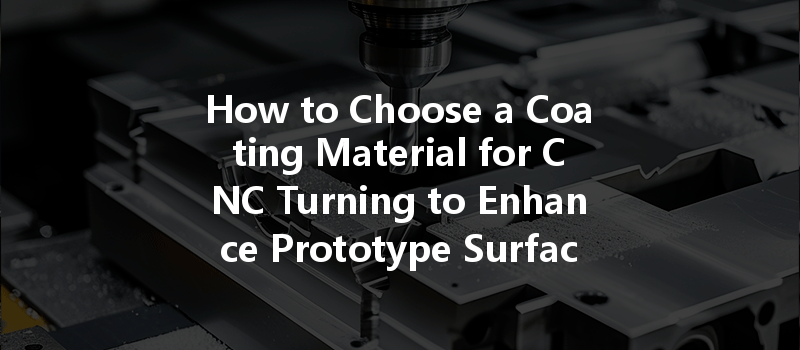Imagine a world where the surface of every component, regardless of its function or material, is not only aesthetically pleasing but also durable, resistant to corrosion and wear, and optimized for performance. A significant part of achieving this vision in mechanical fabrication lies in the careful selection of coating materials, especially for prototypes manufactured through CNC (Computer Numerical Control) turning.
CNC turning, a highly precise machining process, allows manufacturers to create components with intricate designs and exact specifications. However, the surface quality of these parts plays an essential role in their performance, longevity, and appearance. In fact, studies have shown that the right coating can improve the lifespan of machined parts by up to 50%. So, how do you choose the right coating material that not only enhances the prototype’s surface but also meets functional requirements?
Understanding CNC Turning
Before diving into the details of coating materials, it is crucial to grasp the fundamentals of CNC turning. CNC turning involves rotating a workpiece against a fixed cutting tool to create cylindrical shapes. This method boasts high precision, making it ideal for producing intricate designs commonly needed in prototypes.
Key Benefits of CNC Turning
Given these advantages, selecting an appropriate coating material is essential to maximize the surface quality and functionality of CNC-turned prototypes.
The Importance of Coating in CNC Turning
Selecting the right coating material for CNC-turned prototypes enhances their surface quality and significantly impacts the following aspects:
Now that we recognize the importance of coatings, let’s delve into how to choose the proper coating material for your CNC-turned prototypes.
Factors to Consider When Choosing Coating Materials
The type of material you are working with plays a significant role in determining the ideal coating. Common materials used in CNC turning include:
Understanding the properties of your base material will help narrow your options for coatings.
Consider the conditions the prototype will be exposed to:
Defining the performance requirements of your prototypes will guide your coating choices:
The visual aspect of your prototype is often as important as its functional properties. The right coating enhances the attractiveness of the final product, which can make a significant difference in the marketability of the prototype.
The way a coating is applied can affect both its performance and cost:

Types of Coating Materials
With the factors mentioned above in mind, let’s explore some popular coating materials and their applications in CNC turning.
Anodizing is an electrochemical process that increases the thickness of the natural oxide layer on aluminum parts. It provides excellent corrosion resistance, wear resistance, and can be dyed for enhanced aesthetics.
Powder coating involves applying a dry powder polymer that is then cured under heat, creating a hard finish. This process results in a robust, resilient surface with a variety of colors and finishes.
PVD is a vacuum coating process that produces a thin, durable layer on a substrate. It’s commonly used for tools and parts that require high hardness and scratch resistance.
Polymer coatings, including epoxy and urethane, provide excellent chemical resistance and flexibility. They are beneficial in applications where the part may be exposed to harsh chemicals or varying temperatures.
Galvanization involves coating steel or iron with a layer of zinc to protect against corrosion. It’s a common method in construction and automotive industries that require durable rust protection.
This process involves depositing a layer of metal onto a part through electrolysis. It not only improves corrosion resistance but can also enhance appearance and conductivity.
Making the Right Choice: A Step-by-Step Approach
Now that you have an understanding of the factors and coating materials, follow these steps to select the most suitable coating for your CNC-turned prototype:
The selection of the right coating material is a crucial step that impacts both the functional and aesthetic aspects of CNC-turned prototypes. By taking the time to consider the base material, environmental conditions, required performance, and preferred aesthetic qualities, you can ensure that your prototypes not only meet but exceed the demands of their applications.
In a competitive marketplace where the durability and performance of components can set one product apart from another, understanding and implementing the right coatings can drive your success. Whether you are involved in aerospace, automotive, medical device manufacturing, or consumer goods, the insights shared in this blog will guide you in making informed decisions that enhance the surface quality of your machined parts.
Considering this importance, take a moment to reflect on how the right coating material can transform your prototypes from ordinary to exceptional. The decisions you make today will influence not only the immediate outcomes but also the long-term viability and marketability of your products. The surface quality matters—let it shine.






